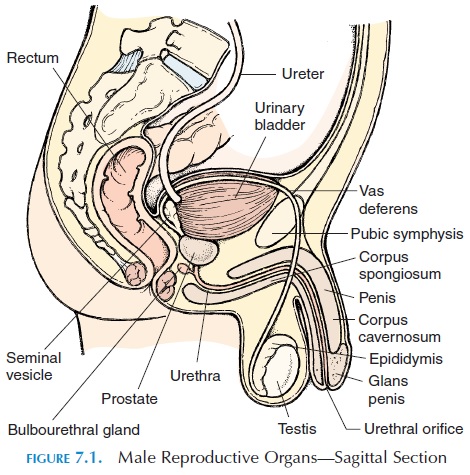Chapter: The Massage Connection ANATOMY AND PHYSIOLOGY : Reproductive System
Accessory Glands - Male Reproductive System
ACCESSORY GLANDS
The seminal vesicle, together with the prostate and bulbourethral gland, form the accessory glands. These glands function to provide the nutrients re-quired by the sperm for motility, to activate the sperm, to help propel the sperm along the reproduc-tive tract, and to counteract the acidity of the ure-thral and vaginal contents. The secretions of the glands and the contraction of smooth muscles are regulated by the autonomic nervous system.
Seminal Vesicles
The two seminal vesicles are located on the posterior aspect of the urinary bladder (Figure 7.1), embedded in the connective tissue between the bladder and the rectum. The two glands contribute about 60% of the semen fluid. The fluid contains fructose (nutrient), prostaglandins (stimulates contraction of smooth muscles), and fibrinogen (which helps the fluid to form a temporary clot in the vagina), among other substances.

Prostate Gland
The prostate gland is a muscular, rounded organ of about 4 cm (1.6 in). It surrounds the urethra as it leaves the bladder and consists of 30 to 50 compound tubuloalveolar glands that open into the urethra. The fluid secreted by the prostate is acidic and contains, among others, an antibiotic that prevents urinary tract infection. Its secretion make up 25% of the voume of semen.
The Bulbourethral Glands
The two bulbourethral glands (Cowper’s glands) are situated at the base of the penis. They secrete thick, alkaline mucus, which helps to neutralize the acidity and provide lubrication.
Related Topics